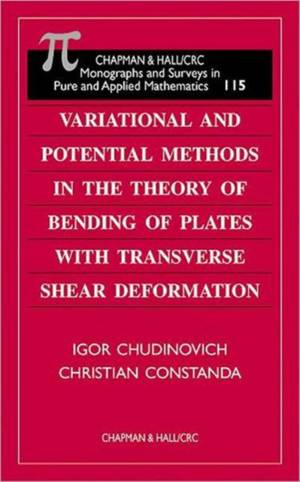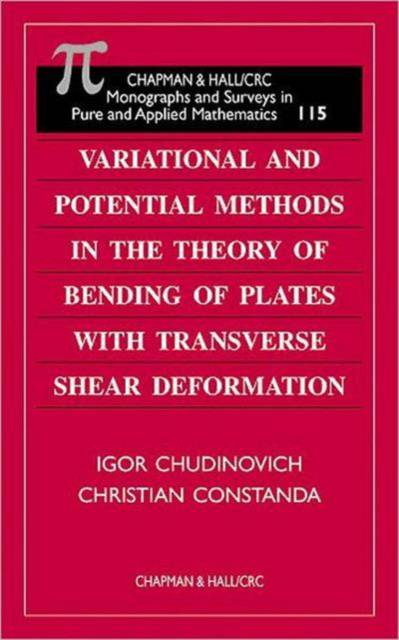
Nos liseuses Vivlio rencontrent actuellement des problèmes de synchronisation. Nous faisons tout notre possible pour résoudre ce problème le plus rapidement possible. Toutes nos excuses pour la gêne occasionnée !
- Retrait gratuit dans votre magasin Club
- 7.000.000 titres dans notre catalogue
- Payer en toute sécurité
- Toujours un magasin près de chez vous
Nos liseuses Vivlio rencontrent actuellement des problèmes de synchronisation. Nous faisons tout notre possible pour résoudre ce problème le plus rapidement possible. Toutes nos excuses pour la gêne occasionnée !
- Retrait gratuit dans votre magasin Club
- 7.000.0000 titres dans notre catalogue
- Payer en toute sécurité
- Toujours un magasin près de chez vous
Variational and Potential Methods in the Theory of Bending of Plates with Transverse Shear Deformation
I Chudinovich, Christian Constanda
244,95 €
+ 489 points
Description
Elastic plates form a class of very important mechanical structures that appear in a wide range of practical applications, from building bodies to microchip production. As the sophistication of industrial designs has increased, so has the demand for greater accuracy in analysis. This in turn has led modelers away from Kirchoff's classical theory for thin plates and toward increasingly refined models that yield not only the deflection of the middle section, but also account for transverse shear deformation. The improved performance of these models is achieved, however, at the expense of a much more complicated system of governing equations and boundary conditions.
In this Monograph, the authors conduct a rigorous mathematical study of a number of boundary value problems for the system of partial differential equations that describe the equilibrium bending of an elastic plate with transverse shear deformation. Specifically, the authors explore the existence, uniqueness, and continuous dependence of the solution on the data. In each case, they give the variational formulation of the problems and discuss their solvability in Sobolev spaces. They then seek the solution in the form of plate potentials and reduce the problems to integral equations on the contour of the domain. This treatment covers an extensive range of problems and presents the variational method and the boundary integral equation method applied side-by-side. Readers will find that this feature of the book, along with its clear exposition, will lead to a firm and useful understanding of both the model and the methods.Spécifications
Parties prenantes
- Auteur(s) :
- Editeur:
Contenu
- Nombre de pages :
- 248
- Langue:
- Anglais
- Collection :
Caractéristiques
- EAN:
- 9781584881551
- Date de parution :
- 13-06-00
- Format:
- Livre relié
- Format numérique:
- Genaaid
- Dimensions :
- 163 mm x 244 mm
- Poids :
- 453 g







